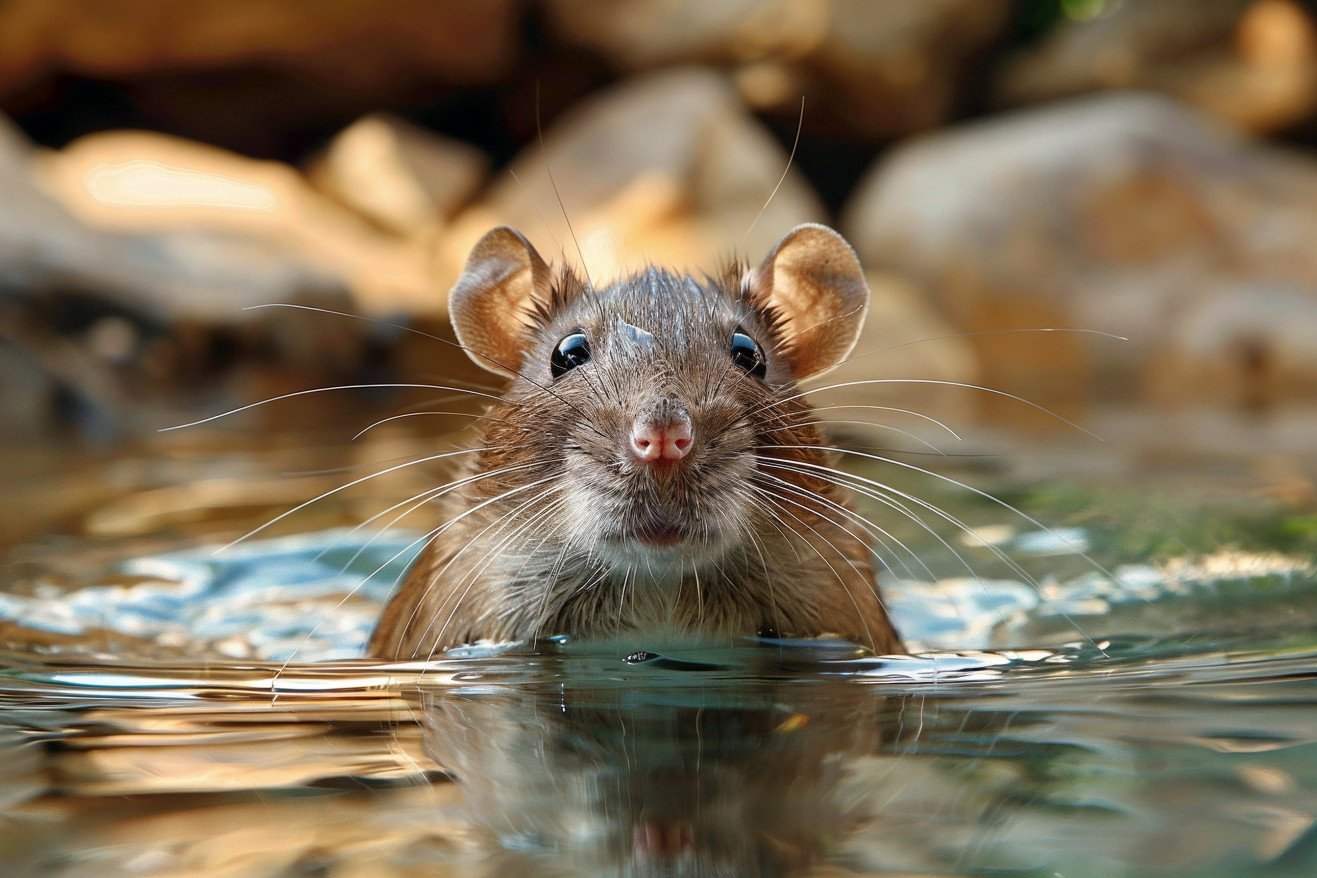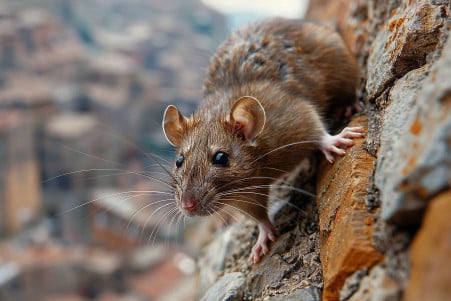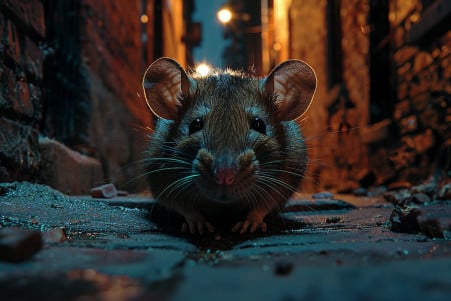Do Rats Swim? The Truth About Their Surprising Swimming Abilities
5 March 2024 • Updated 4 March 2024

Rats may get a bad rap in many ways, but you may be surprised to learn that they are actually pretty good swimmers. In fact, rats are strong swimmers that can hold their breath for up to 3 minutes, swim for half a mile, and even use their tails to stay afloat for up to 72 hours. They can also swim through sewer systems.
This article will take a deep dive into a range of research from the fields of zoology, animal behavior, and ecology to explain rats’ swimming abilities. It will cover their physiological adaptations, historical relationships with waterways, and the ecological consequences of their swimming. This interdisciplinary approach will provide a thorough understanding of not just whether rats can swim, but how they are able to do so so effectively.
Do rats have the ability to swim?
Why Rats Can Swim for So Long
Rats’ ability to swim for so long is due to a number of physiological adaptations. For example, respiratory adaptations that enable more efficient oxygen use help rats hold their breath for long periods of time.
In fact, one study published in PMC even found that regular swimming can lead to improvements in muscular and cardiovascular function in animals, a discovery that would be especially relevant to rats and would help improve their swimming ability by improving muscle structure and development.
In addition, the properties of rat fur are especially important in helping rats swim for long periods of time. The fur helps rats float and reduces water resistance, which conserves energy and makes it easier for rats to swim for long periods of time.
These adaptations aren’t just random occurrences; they are adaptations that have evolved to help rats survive and thrive in a variety of environments, especially those that are near water. In fact, one study even found that the interaction between diet, exercise, and physiological traits like muscle hypertrophy is important for maintaining these adaptations.
So while learning about the specific physiological adaptations that rats have made to water may be interesting, it can also help us learn more about the survival strategies that rats have developed as a result of their long history of living near water.
Maritime Menace: Rats and the Historical Ecology of Waterways
The story of rats and waterways is a long and complicated one that is deeply intertwined with human history. Rats have historically been responsible for carrying a number of diseases, some of which have been transmitted via waterways, as shown in a study on the infectious agents carried by European rats that was published by PMC.
In addition, the ANSI Blog notes that ships have been responsible for the rats’ worldwide spread. The ship rat, which is an excellent swimmer and climber, has traveled the world as an unintended passenger on human ships.
Once they’ve stowed away, rats have had a major impact on global trade and exploration. A study published in the Journal of Global History looks at the success of rats as stowaways on British and American ships from the 1850s to the 1950s, when they repeatedly evaded attempts to control them and helped spread diseases like plague.
Rats’ swimming abilities have been key to their success in this area, helping them to travel to and take over new lands and leaving both ecological and economic damage in their wake.
This history shows that rats have played a major role in shaping the relationship between human societies and aquatic environments. By looking at the swimming styles and behaviors of these adaptable animals, we can learn more about their adaptability and the problems they pose to the ecosystems they invade.
The Science of Rat Swimming
The way rats swim is a demonstration of the power of evolution. In his study, Frank E. Fish explains that water rats, like Hydromys chrysogaster, use a complex stroke pattern that is both precise and efficient to move through the water.
They use their hind feet to paddle in an alternating pattern while keeping their nostrils, eyes, and dorsum above the water. This highly skilled swimmer, which is completely at home in the water, even manages to coordinate its movements to produce bow and stern waves.
Rats are also masters of buoyancy, using their fur to help them float and their tails to help them steer.
A study in the Journal of Mammalogy by Jos Aarao Magnan-Neto found that the fur of semiaquatic rats has a lower water absorption rate, which allows them to maintain a more hydrodynamic posture and swim more efficiently. The study also found that there are differences between species, with some rats being able to float with ease and use the ‘swimming bound’, a powerful swimming gait that increases their endurance in the water.
In addition, the differences in swimming behaviors between the various species of rats that have been observed show how rats have evolved to adapt to their different environments. This knowledge of the way rats swim—how they move, stay afloat, and use their tails to navigate—shows how adaptable they are and sets the stage for understanding the ecological impact of their swimming abilities.
Unintended Consequences: The Ecological Impact of Rats’ Swimming Prowess
Rats’ swimming prowess has enabled them to colonize new regions, especially islands, and this has had major ecological impacts. Rats have been especially destructive in island ecosystems because they are invasive and native species often have no defenses against them and their swimming abilities.
For example, on Hawadax Island in the Aleutians, a study in PMC found that the native rocky intertidal community structure was able to recover after the removal of invasive Norway rats, demonstrating the far-reaching indirect impacts of rats as apex predators.
Other research, including work by scientists at the University of California, Santa Cruz, detailed by the University of California, Santa Cruz, has shown that rats’ presence on islands has disrupted both terrestrial and marine ecosystems, leading to declines in seabird populations, changes in intertidal zones, and shifts in the populations of species like snails and barnacles.
Case studies, like the one on Hawadax Island, demonstrate the potential for ecosystems to recover after rats are removed and emphasize the need for conservation efforts that recognize the many ways rats’ swimming prowess impacts the environment.
To protect vulnerable island ecosystems from the ecological disruption caused by swimming rats, it is important to understand these abilities so that biodiversity and ecological balance can be maintained.
Navigating the Cityscape: Rat Swimming in Urban Environments
Rats have proven to be highly adaptable and resilient in urban waterways. Their swimming ability allows them to move through the complex sewage systems that are a major problem for urbanites, according to the Journal of Urban Ecology.
The study notes that the lack of knowledge about urban rat ecology is a major obstacle to developing effective pest management strategies. Rats use their swimming ability to get into even the most secure homes, including traveling up through the sewer system and into the toilet, according to Critter Control.
This not only shows their adaptability but their ability to take advantage of the urban environment. Their ability to hide and the complex water systems that provide them with both shelter and food mean that it’s hard to manage their populations.
To develop better urban management strategies, which are important for public health and maintaining property values, we need to better understand these behaviors. This means that a combination of scientific study and the knowledge of pest control professionals is needed to effectively manage rat populations in urban environments.
The Aquatic Talents of Rats: A Summary
In this article, we’ve delved into the unexpected aquatic talents of rats, including their ability to hold their breath, swim, and even dive, as well as their ability to navigate the waterways of cities. Physiological adaptations, including lung capacity, musculature, and fur, enable rats to swim and dive, and these adaptations have helped rats thrive in a wide variety of environments.
The ability of rats to swim has had a major impact on ecosystems throughout history, enabling them to spread diseases around the world and influencing the ecosystems of islands and coasts. Rats’ swimming abilities have had—and continue to have—profound ecological impacts, often leading to significant changes in biodiversity and requiring conservation measures to mitigate.
In cities, where rats are a common and often unwelcome presence, understanding rats’ biology and behavior, including their swimming abilities, is essential for managing and controlling their populations.
As we’ve seen, rats’ swimming abilities are more than just an interesting biological phenomenon—they’re a key factor in rats’ success and impact in the world. Understanding and appreciating rats’ aquatic abilities can help us understand and respect their adaptability and inform our efforts to live with these urban animals.


